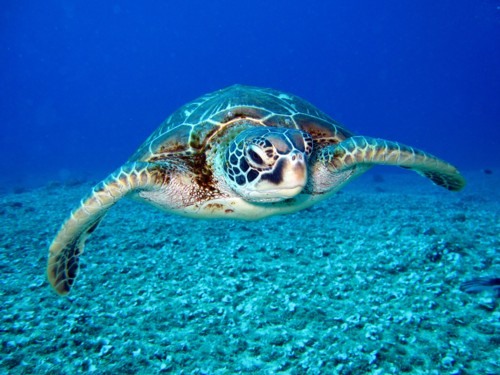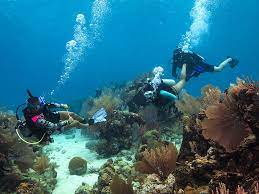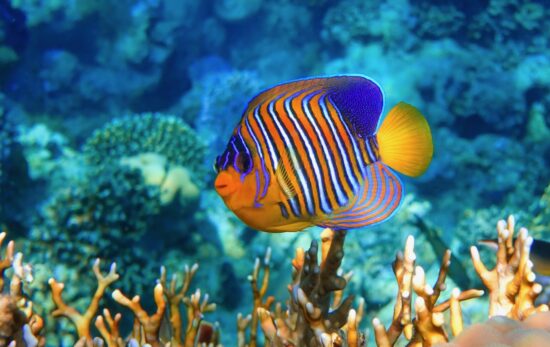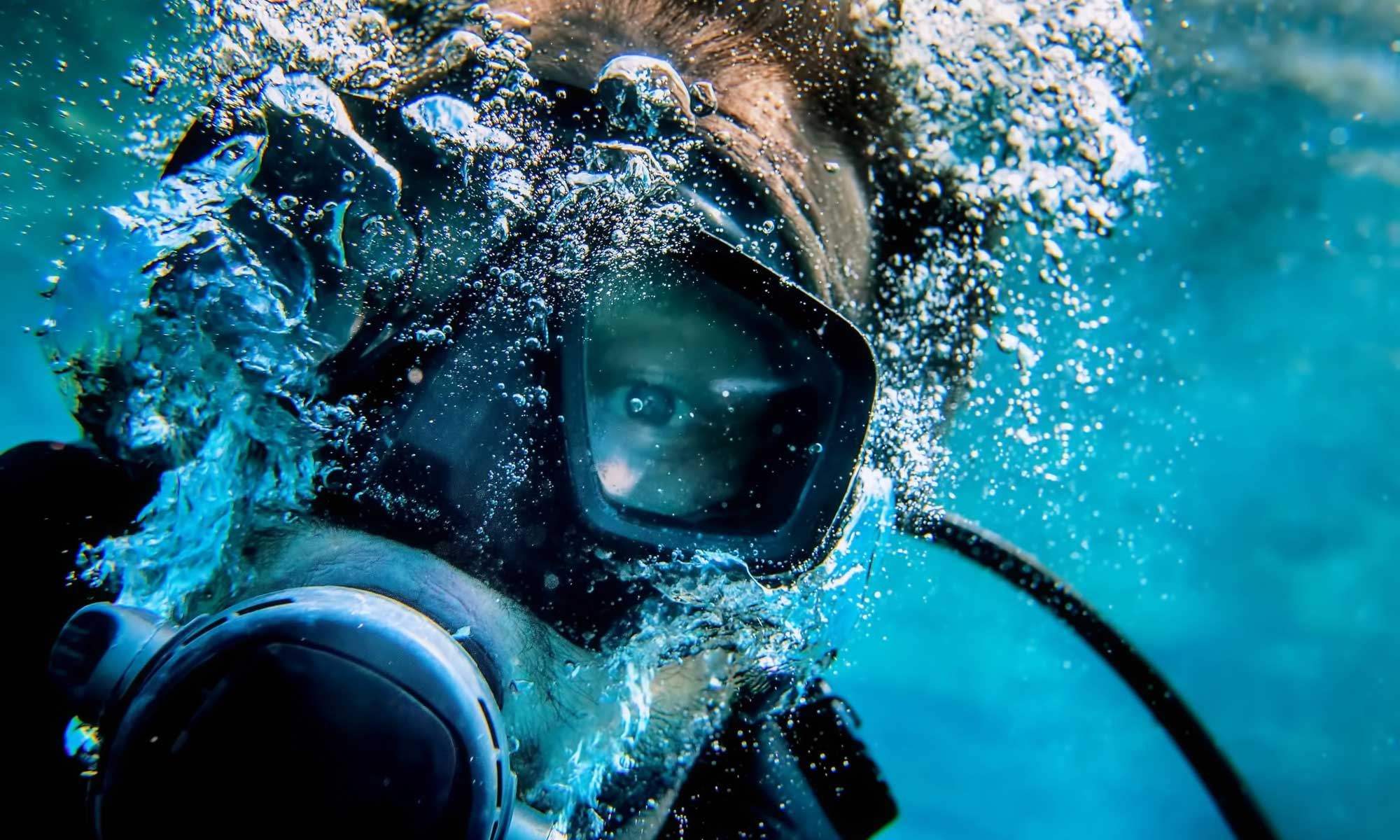

 Online Scuba Lessons |
 Online Nitrox Lessons |



I recently got a nasty-gram informing me that I was going to be kicked out of the union if I didn't learn how to play golf. I was already on probation for not wearing awful ties and for not taking wednesdays off, so I figured I better comply with this one. I had never played golf where one didn't try to get the ball between the dinosaur's legs, so it was clear to me I needed some lessons before going into this unknown realm. Believe it or not, I learned a lot about teaching scuba diving during the process.
Awkward and slow! I foolishly thought that learning to hit a non-moving object that couldn't hit back would be a snap. Unfortunately, my first hit was the dirt four inches in front of the ball and the dirt patch flew further than the ball. Holding the club was awkward and unnatural; I was slow to get into proper weird body positions, and could not repeatedly perform the same movements. All the ways I had trained to move my body were now useless.
Suddenly, I appreciated, to a greater degree, what I ask my students to do when they learn to Scuba Dive. I ask them to put on strange gear and adjust it until it is "comfortable". Then I put them in the water where the reflexes developed throughout their lives no longer apply and are actually dangerous. For example, as land beasts we are oriented by gravity, but as divers we are buoyancy creatures, with a whole different set of movement rules. As swimmers we have been taught to hold our breath when our face is in the water and do so naturally - yet as divers this can be lethal. As an Instructor, I am constantly amazed at how slowly my students get their gear assembled, put it on, and get in the water. Having returned to the student mode I am impressed that they ever got going and appreciate their progress even more.
I know that I'm supposed to hold onto a golf club with uniform tightness throughout the swing, so why do I sometimes loosen my grip at the top of the swing? It seems a simple program; Hold club, swing club, hit ball, ball goes where it I wanted it to. No; we don't program ourselves the way a computer does. We must make memory proteins, dendritic connections and the like, so many repetitions are required. Why then am I surprised when a student who did so well in the pool has trouble clearing his regulator in the water. All of us are imperfect, but we can get better with good instruction and remember that practice only makes permanent; Good instructions followed by perfect practice makes perfect.
Congratulations! Every time I hit a good shot, I get instant feedback: the kinesthetic feel of a good hit; that special sound of the sweet spot impact, the sight of it flying straight and far, and on top of that, my golf partner immediately provides feedback - WOW! or Gee, you really smacked that thing, YEE HAH!! No wonder the learning curve is so steep.
Now let's look at the pool session. I've got the class suited up (finally), in the water, breathing (a good start). Then, I go through instruction on clearing the mask and then expect them to do it.
Here these land beasts voluntarily lose their ability to see, get irritating water in their eyes and maybe (or probably) up their nose, fight the involuntary desire to bolt to the surface and hold their breath, and then properly clear their mask, an act in which there is no similar land behavior. For that work, all they get is a return to what they started with, an air-filled mask and a grand and glorious "OK" sign from me as I quickly move to the next student.

Does this sound familiar; Put your regulator in your mouth, inflate your BC, hold your right hand on your regulator and mask, hold your left hand on your weight belt, step smartly into the water, keeping your legs spread, as soon as your fins touch the water, kick to keep from going under, turn around and give me a big "OK" sign. Geez-o-pete, it's amazing that the students don't miss the water. But then again, behavior is shaped based upon successfully learned parts of the activity.
It's a game of mistakes. After a series of good shots during one of my recent golf games, I turned to my partner and burbled blithely, "I'd be happy if I could hit them like that 50 % of the time." He ginned, shook his head and replied: "If you could hit them like that half the time we'd both be rich". "Even the pros make mistakes". Ooh, I get it, I have to expect to have less than perfect performance and be taught how to compensate for problems. Sounds like a good idea for diving. If you get too close behind another diver you might get your mask kicked off, so you need to learn how to clear it. Your pressure gauge might jam, what do you do? While going after your buddy you go deeper than planned, now how do you determine if you need to decompress and calculate how long and where to do it. Your buddy can't feel his legs after a dive, so where is the nearest chamber. There are no perfect dives, if there were we wouldn't be challenged by diving any more and it would be no fun. So, play your mistakes it makes the whole meal deal a lot more fun.
Dive Safe and dive often,
Bwana
![]()

Aquastrophics Dive & Travel
(928) 680 - DIVE (3483)